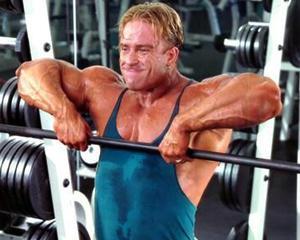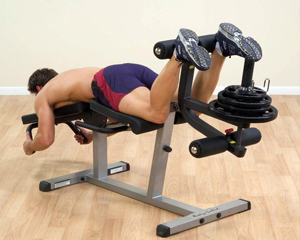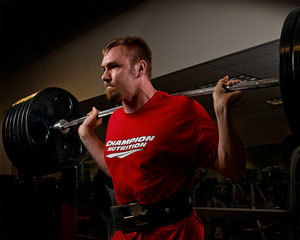HIMPING HIMPERS SITTING
 Dumbbell bench press is an excellent tool for deep development of the front and to a lesser extent middle deltoid heads, it increases the mass and strength of the shoulder muscles, gives the deltas a rounded convex shape.
Dumbbell bench press is an excellent tool for deep development of the front and to a lesser extent middle deltoid heads, it increases the mass and strength of the shoulder muscles, gives the deltas a rounded convex shape.
The exercise has one undoubted advantage over the barbell bench press: the amplitude of the movement when pressing the dumbbells is much more, and therefore the muscles are worked out more fully.
Technique performing dumbbell bench press sitting
The “cleanliness” of the exercise greatly influences the final result of the exercise and prevents possible injuries from getting. Learn the technique, training with small weights, and only then gradually increase the weight of dumbbells.
Proper exercise technique:
1. Install the bench back at an angle of 80 degrees. Sit on the bench, tightly pressed to the back, hold the dumbbells in both hands and lift them to the level of the ears. The forearm lines should be parallel and the palms should be pointing forward. Head looks straight, shoulders turned. This is the starting position.
2. Inhale, hold your breath and gently squeeze the dumbbells so that they touch exactly above your head. The movement of the dumbbells occurs strictly in the vertical plane and resembles the drawing of a triangle, with the top at the top of the movement.
3. After a minimum pause, while exhaling, gently lower the dumbbells along the same trajectory to the starting position.
4. Perform the intended number of repetitions.
It is important:
Do not tear the lower back from the back, and do not relax the muscles of the back and abdominals, as this removes some of the load from the deltas and may even lead to injury. Important and hold your breath during the press: it increases intra-abdominal and intrathoracic pressure, which facilitates the fixation of the spine.
Reduce the dumbbells at the top of the movement, thus you will achieve the maximum reduction of deltoids.
Dumbbell movement should be smooth and without sharp jerks or throwing down, it is fraught with spinal injuries.
Do not use dumbbells of excessively large weight, otherwise you risk losing balance, and this is fraught with consequences. In addition, you will severely limit the amplitude of the movement, which will not allow you to lift your shoulders as much as possible upwards, which means that the muscles will not “work out”. The result will be appropriate.
Working muscles
deltoid muscles (especially the anterior bundle, smaller than the middle, minimally – the back)
triceps
top of pectoral muscles
Alternative exercises
Barbell bench press
Bench press from behind the head
Press arnold




